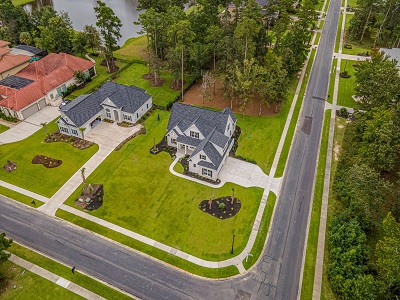
Having your dream home built is an exciting experience but your enthusiasm can be tempered easily by the unfamiliarity and intricacy of mortgage loans for new home construction. Understand the fundamentals of home construction loans and be prepared when the time comes that you have to decide if you want to build your custom home.
2 Types Of Custom Home Construction Loans
Home construction loans are available in two types:
Construction-To-Permanent – You borrow cash to cover the construction costs. Once you move in, the lender will change the loan balance into a permanent mortgage, making it two loans in one.
Stand-Alone-Construction – the first loan you will get is going to be for the construction costs. Once you move in, you will obtain a mortgage to pay for your construction debt. Unlike the first type, this is two different loans.
Construction-To-Permanent Loans
You will have lesser fees to pay because you just have a single closing with a construction-to-permanent loan. In the construction period, you will only focus on the outstanding balance. The interest rate is changing during the construction phase, which means it could move up or down based on the prime rate. In case the Federal Reserve decreases or increases short-term interest rates while your house is being constructed, you can expect your interest rate to change.
The construction loan will be changed into a permanent mortgage by your lender once the construction of your custom home is completed. The permanent mortgage is just like any other mortgage. You can specify the term of the loan, usually, 15 or 30 years, and choose between an adjustable rate loan and a fixed rate loan. If you think you are ready, you need to shop as well as compare mortgage rates.
Several lenders will let you set a maximum mortgage rate once the home construction starts. Most of them will ask for a downpayment of at least 20% of the anticipated amount of the permanent mortgage.
Stand-Alone-Construction
If you can make a smaller down payment then a stand-alone construction loan can be a good option. This can be beneficial if you already own a house and do not have the budget for a down payment but expect to have more cash once you sell your house. You can still reside in your existing home while your next Myrtle Beach custom home is being built.
However, this type of loan also has some drawbacks. These include paying two sets of fees and closings (construction loan and permanent mortgage) and not being able to lock in a maximum mortgage rate. In case of rates increase while your custom home is being built, you might have to pay for higher interest rates than you expect from your permanent loan. And in case your financial situation changes for the worse while your house is being constructed, you might find this hard or impossible to qualify for a mortgage loan.
Qualifying For A Construction Loan
Once you apply for a loan to build your house, the lender will not have a complete custom home as collateral. It means qualifying for a loan can be hard. The lender will also ask for details regarding the size of the home, the materials used, and the people who will do the work. The general contractor can get all of these details for you. Apart from that, the lender will find out if you can pay your monthly dues while your house is being built. In case the lender thinks that you cannot make your current mortgage payment during construction, you will not be able to qualify. Use Bankrate’s mortgage-comparison tool if you think you can qualify.
Sufficient Savings For Unforeseen Costs Is A Must
The lender needs to make sure that you have enough savings to pay for unforeseen costs. Cost overruns happen when a borrower changes his mind about what they want to have during the construction process.
Choosing A Custom Home Builder
An essential part of building a home is selecting the right custom home builder. Find one that is experienced at building the type of house you wish to have including the style, price, and size. Check the credentials of the builder with your local homebuilders’ association. You should also ask for references from the builder’s former clients. You should also check the Better Business Bureau and determine if there are any complaints against the potential builder. The lender will check into the credit standing, licenses, financial situation, and track record of the potential builder.
Expect Ongoing Inspections During the Construction
Lenders will perform routine inspections while your home is being built. During this time, the lender will pay the builder in “draws” or stages and sends out an inspector or appraiser to ensure that construction continues as planned.
Call Dawol Homes if you want to work only with the best builder for the construction of your dream home.
Like our Facebook page for more great info about custom homes.
Dawol Homes
9404 Hwy 17 Bypass,
Murrells Inlet, SC 29576
(843) 294-2859
http://www.dawolhomes.com/
info@dawolhomes.com
No comments:
Post a Comment